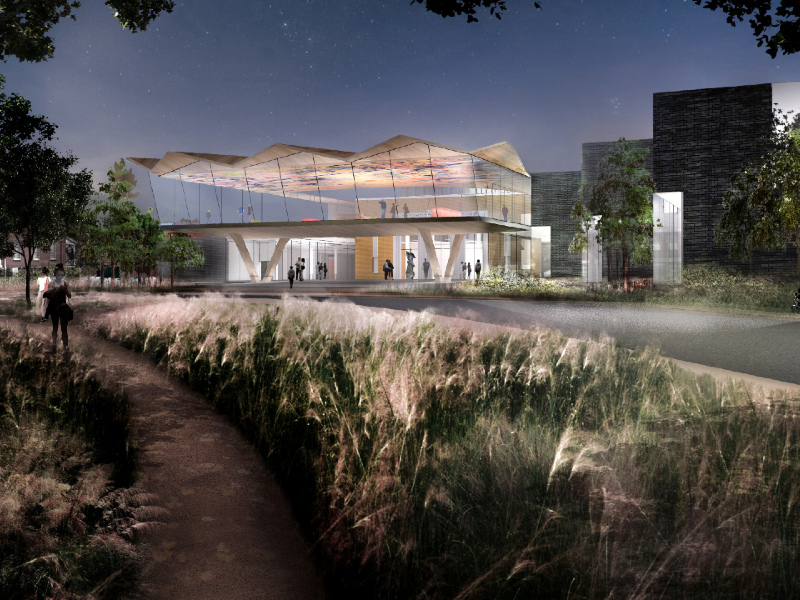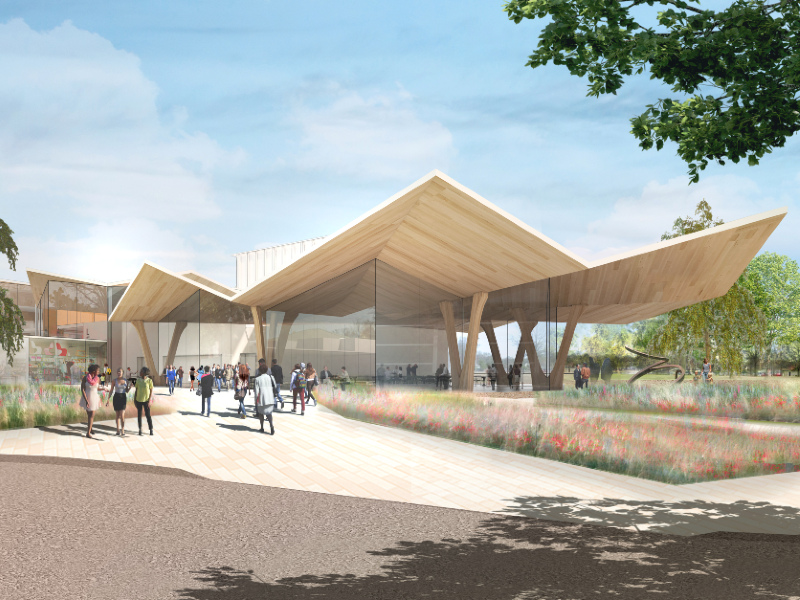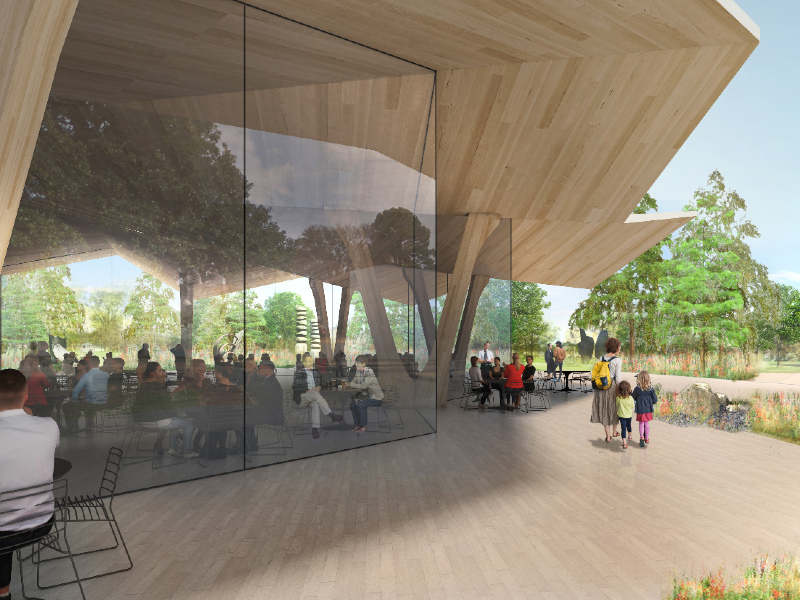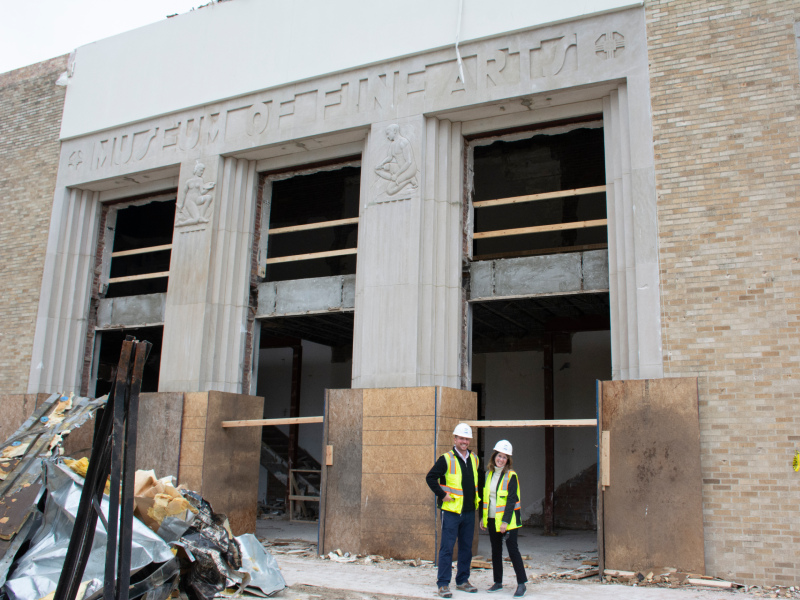The Arkansas Museum of Fine Arts in MacArthur Park, Little Rock, in the state of Arkansas, US, is undergoing a $142m renovation, which is expected to be completed in the fall of 2022.
The museum, previously known as the Arkansas Arts Center, was renamed as the Arkansas Museum of Fine Arts, in January 2021. It is owned by the Arkansas Museum of Fine Arts Foundation, a not-for-profit entity.
Planning for the project began in 2016 while ground-breaking took place in October 2019. The renovated museum is expected to be opened in May 2022.
The renovation will transform the cultural facility into a popular civic attraction in the city, upon completion.
Arkansas Museum background
The museum has more than 100 years of history. Its origins date back to 1914, when the Fine Arts Club was formed, with the intention of bringing art to Arkansas. The Museum of Fine Arts in Little Rock was opened in 1937, becoming the first museum dedicated to fine arts in the state.
The museum was renamed the Arkansas Arts Center in 1960. A new building, which was an addition to that built in 1937, was opened in 1963.
Design elements of Arkansas Museum of Fine Arts’ renovation
The building will have two entrances, one at the north and the other at the south. The northern entrance will feature the historic Art Deco facade of the Museum of Fine Arts, and a spacious plaza.
The southern entrance will greet the visitors with a revitalised landscape in the MacArthur Park. It will feature an open-air terrace facing the park. The way to the museum from the south side will be installed with shady trees.
The museum’s re-imagined design provides a visible architectural identity to the building.
The design will retain some of the historic elements of the museum. Excavation of the existing building will provide visual clarity and open up expanded spaces to accommodate performances, exhibitions, and art-making.
The re-energised museum will have a new pleated, thin-plate roof structure, which will connect the northern entrance with the new glass pavilion, and southern entrance.
The petal-shaped gardens outside the south side entrance will resemble the roof of the museum. They will feature a range of plants, installed between stacked sandstone slabs.
Features of the renovated Arkansas Museum of Fine Arts
The project is expected to renovate, expand, and fully activate the Arkansas Museum of Fine Arts. The re-imagined museum will occupy a 137,000ft² (12,727m²) area.
The renovated museum’s interior design includes well-lit galleries, highlighting the collection of more than 14,000 artworks of the Arkansas Museum of Fine Arts Foundation. The galleries will also host special exhibitions.
At the museum, the Windgate Art School will include classroom studios to provide training in the fields of drawing, ceramics, painting, glass, wood and metalsmithing to adults and children. The classrooms will lead to a gallery space, and an outdoor art lawn.
The Governor Winthrop Rockefeller Lecture Hall will host lectures, educational talk sessions, and conversations with artists. The lecture hall and the performing arts theatre will also host special events such as music shows, live theatre performances, and film screenings.
A glass-enclosed ‘Cultural Living Room’ above the north plaza will provide a community gathering space, with views of downtown Little Rock.
Other facilities will include a full-service restaurant, with indoor and outdoor seating, a shop, and a collections study room. The parking space will be relocated to the north and west sides of the building.
Sustainable features of the Arkansas Museum
The building will use sustainable materials and mechanical systems. Approximately 14 acres of landscaping will be created surrounding the museum. It will include more than 5,400 linear feet (1,645.92m) of new paths and trails. Furthermore, 250 new trees are being added, which will eventually merge with the existing canopy to create a parkland forest.
The rain gardens will receive stormwater runoff from the building’s roof. The landscape will include more than 50 different species of shrubs, perennials, native trees, and ornamental grasses, to attract pollinators and migratory birds.
The project is also targeting the Leadership in Energy and Environmental Design (LEED) Silver certification.
Financing
A special fundraising campaign, called ‘Reimagining the Arkansas Arts Center: Campaign for Our Cultural Future’, was launched, with the goal of securing $142m to fund the renovation project. Approximately $136m was raised by January 2021.
The City of Little Rock contributed $31.2m towards the campaign through a hotel-tax revenue bond.
Other major donors include the Windgate Foundation, Terri and Chuck Erwin, Harriet and Warren Stephens, Winthrop Rockefeller Charitable Trust, and the State of Arkansas.
Contractors involved in Arkansas Museum of Fine Arts’ renovation
Studio Gang, an architecture and urban design practice based in the US, in partnership with Scape and Polk Stanley Wilcox Architects, provided the design for the renovation project.
Studio Gang served as the chief architect while Scape provided landscape design services for the project.
Polk Stanley Wilcox Architects was appointed as the associate architect. Thornton Tomasetti, a global engineering consultancy, was the structural engineer for the project.
McClelland Consulting Engineers was engaged for civil engineering services while dbHMS provided mechanical, electrical, plumbing, and fire protection (MEP/FP), and sustainability consultancy services.
Multi-national consultant Arup provided consultancy services related to acoustics, theatre, and audio/video (A/V) while Licht Kunst Licht was contracted to provide lighting design services.
The construction management team for the project includes Nabholz Construction, Pepper Construction, and Doyne Construction.
More than 50 subcontractors based in Arkansas were selected for the project. Some of them include Hugg & Hall Mobile Storage, Rogers & Dillon Demolition & Excavating, W&W-AFCO Steel, C & F Steel Erectors, Otis Elevator Company, Covington Roofing, Oaks Brothers, and White River Flooring.
Anderson Engineering Consultants was engaged to provide consultancy services related to geotechnical engineering. Terracon, a company based in the US, was appointed as the environmental consultant.
Venue Consulting and Ascent provided cost estimating and project management services.
Other contractors include CTEH, Manask & Associates, Peters & Associates, and Layne Consultants International.





